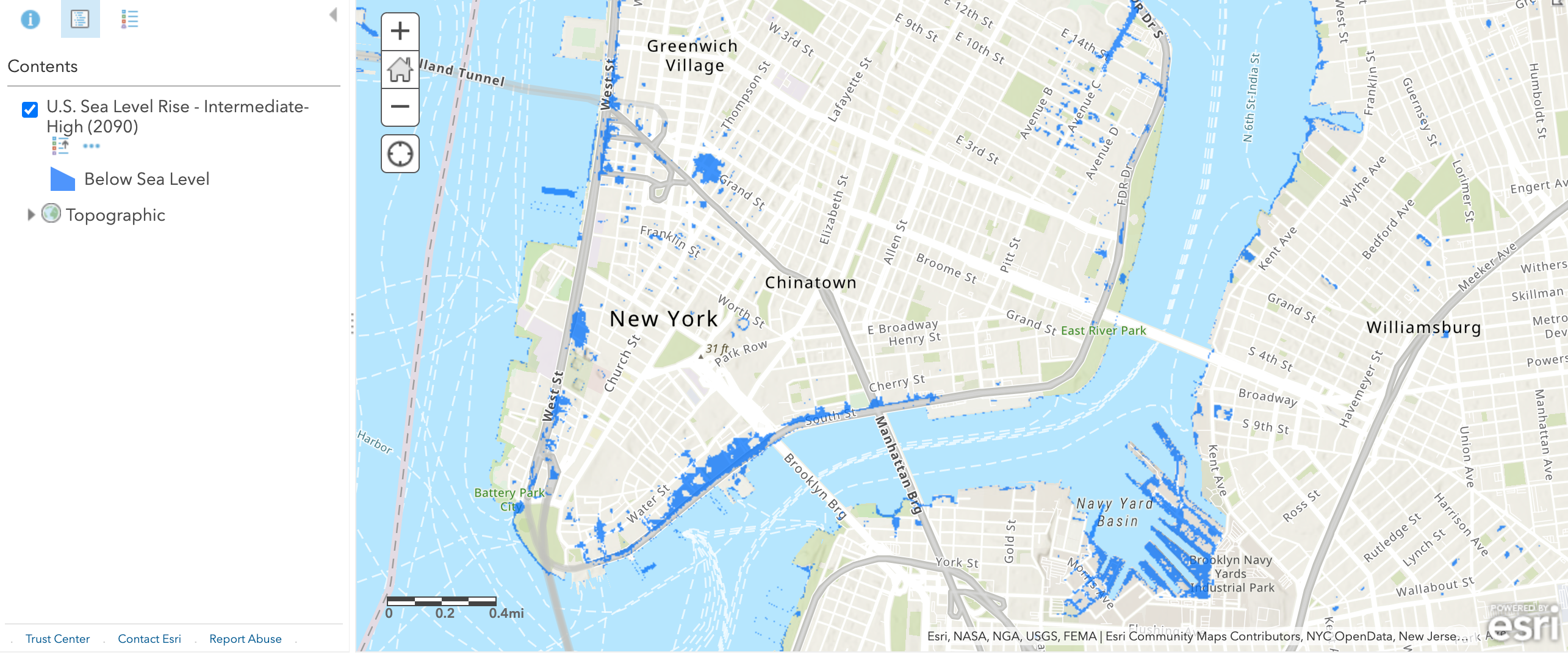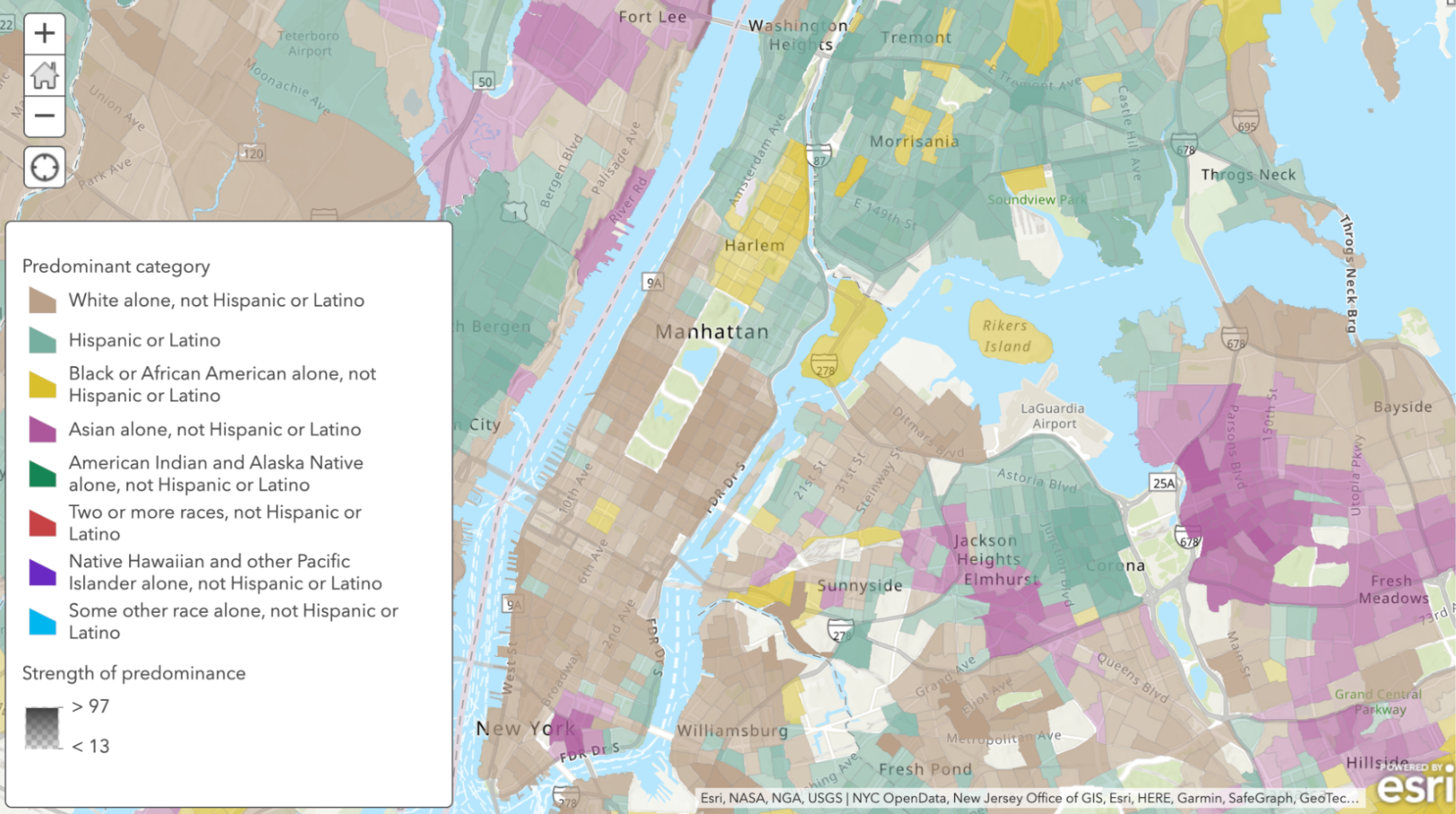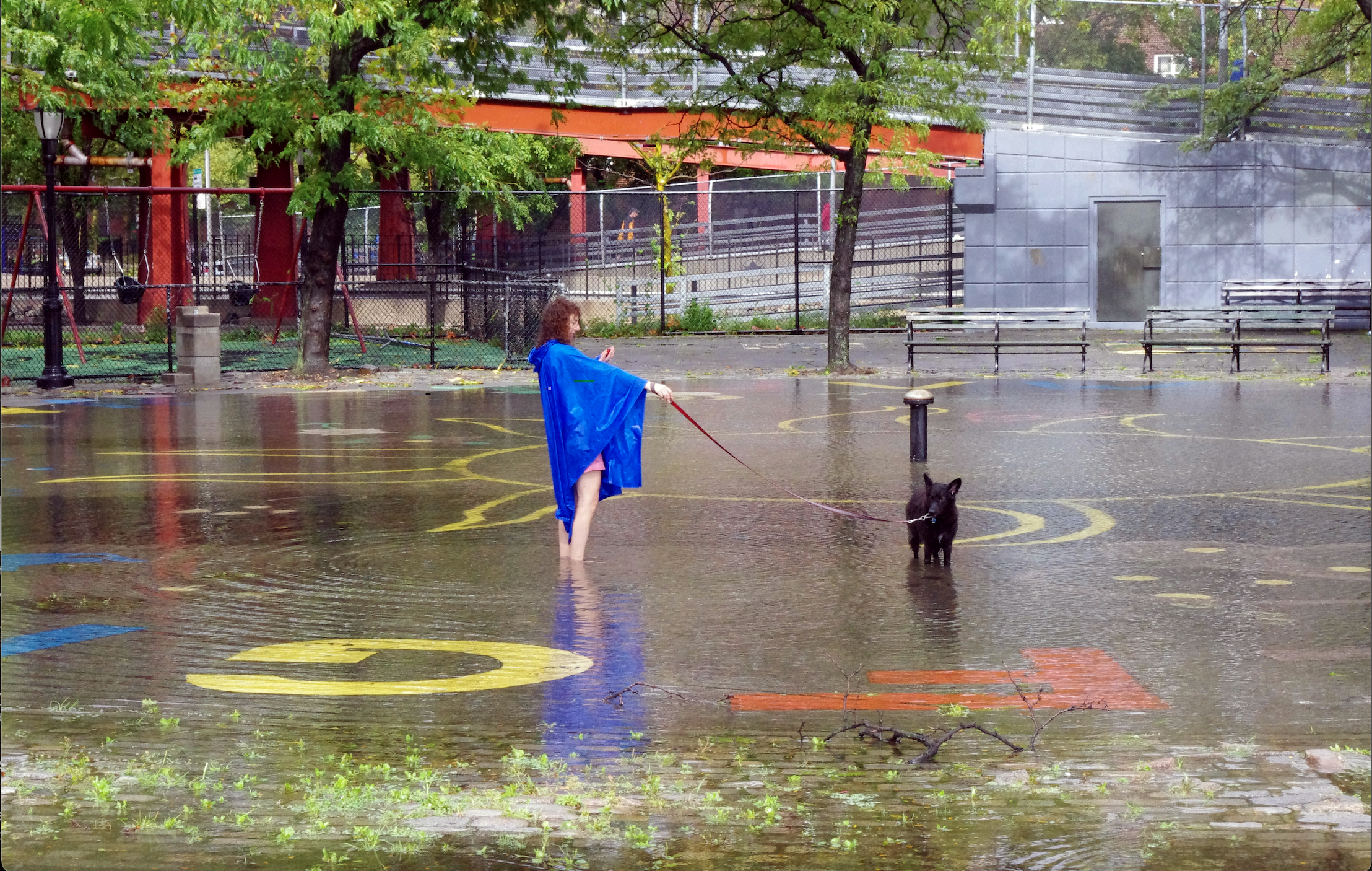It’s the year 2100, and a little boy named John wakes up to the sound of rain. The water rages down on his family’s roof, leaving his bedroom window’s view of Lower Manhattan blurry. John is only 10 years old, but he starts to worry about what the rain means.
He remembers how the last time rain sounded this loud, his friend’s apartment a couple blocks closer to the water flooded, and how his friend had to move away. John hasn’t seen his friend since, and he blames rain storms for it. He starts getting ready for school, wondering if he’ll be able to take the subway or whether the station will be flooded.
The Reality of NYC Flooding
John’s worry is not without good cause. By 2100, severe storms will be more frequent with climate change, and the combination of sea level rise and increasing precipitation will make life chaotic for many in NYC. In fact, in just a couple of decades, NYC can expect to see major increases in storm frequency and severity, flooding both residential and public commonly used spaces such as the JFK Airport.
In addition, over the decades leading up to John’s generation, New York coastlines could rise by about 5 meters under current emission conditions. Down at Battery Park in Manhattan, sea levels have been continuously rising 0.11 inches annually for the past 173 years.

Sea level rise is not just a problem for NYC. Across the world, coastal communities are already facing the effects of increased flooding. In the U.S., cities like Miami and New Orleans are at high risk due to their proximity to the water.
Learning more about NYC’s vulnerability can help us think about what coastal locations across the country (and world) will be dealing with.
Which New York City Residents will Flooding Most Affect?
Sea level rise will inevitably affect all New Yorkers sooner rather than later. However, just as John’s friend needed to move when John’s family didn’t, the influx of water will not affect all New Yorkers equally.
Not only will the water particularly affect those closest to the coasts; flooding will also disproportionately affect those who do not have the means to afford flood prevention.
For example, In 2021, Hurricane Ida killed 11 New Yorkers who lived in basement apartments, which are commonly rented out illegally to to lower-income community members. Queens is especially known for these basement floods. These uncertified apartments throughout the city leave those who cannot afford other living spaces disproportionately at risk to storms and flooding.
Historically underrepresented communities will continue to deal with some of the worst effects of NYC flooding, in addition to having financial trouble paying for the damages. Specifically, there is a strong correlation between areas with majority Black/African American and Asian populations in low income areas with high risks from climate change.

For example, Doris Brook Square Historic District, a neighborhood in the majority African American Harlem, is currently dealing with a sewer issue that frequently floods the basements of an increasing number of houses.
And China Town down in the Lower East Side of Manhattan suffered from East River water levels rising high enough to destroy cars parked in the streets during hurricane Sandy.
Instances like these will only get worse as sea levels increase.
What’s Being Done?
New York City is working to build better sea infrastructure, with large-scale projects like the East Side Coast Resiliency Project already underway. However, these also have social justice ramifications, as not all voices are being equally taken into account in these new development plans. For example, the initial plans for the park were switched without community consultation, leaving many Lower East Side residents with a plan that no longer gave them the park plans they had carefully agreed upon.
The city even got in trouble for disregarding the federal Minority and Women Owned Business Enterprises (MWBE) regulations (MWBE are typically 30% in NYC) when contracting the East River park area of the project, causing The Black Institute and other organizations to file a lawsuit against the de Blasio administration.
We must find a way to involve more stakeholders into these planning processes. Thoughtful engagement with all parties that will be affected by a decision is necessary for equitable flooding solutions.

What Can You Do?
Let’s not let John’s generation suffer the consequences of sea level rise on their own. Every New York City resident and global citizen has a role they can play. Here are some ideas to get involved with making sure the most equitable solutions are prioritized for impending flooding in Manhattan, or your local coastal city.
- Attend meetings about sea level rise plans
- Be on the lookout for local community meetings about sea level rise plans. Think critically about how those plans will help and potentially hurt certain communities.
- Advocate for emissions reductions in your city.
- Even those who do not live in areas directly impacted by flooding still can help!
- Donate to advocacy groups
- Organizations like Climate Central are fighting climate change and sea level rise globally. Also do your best to prioritize the actions of EJ groups, such as WeAct.
- Know your risk
- Many free resources like Risk Factor can give you a good sense of your flooding risk, down to your exact address. Be prepared for future storms by understanding your current flooding risk.
- You can also check out NOAA’s Sea Level Rise-Map Viewer to see global effects of flooding.
Sea level rise will continue to harm socially vulnerable community members at an increasing rate, and every person has a role to play in preparing for and preventing more ocean-driven catastrophes in our cities.
